Our trip began on Thursday night. Parking at The Parking Spot or Wally Park would’ve cost over $200 for ten days (with coupons!), so we took UberX ($49) from Chino Hills to the Crowne Plaza LAX, where we stayed for free by using 25,000 IHG points (an easy way to get IHG Platinum status and points is to get the IHG Rewards Club MasterCard).
Our itinerary was exciting! Our routing looked like this: LAX/SFO/KIX/TPE/ICN/SFO/LAX.
Had we paid out of pocket, it’d cost over $16,000. We, however, covered the entire itinerary (6 flights in First and Business class) for 300,000 Aeroplan points and $360 in taxes and fees. (Many people don’t know that award tickets often allow one or two stopovers and one or two layovers. These typically do not require additional points, for they are all part of the same award ticket. We chose to enjoy a six-day stopover on the Osaka (KIX) leg before continuing on to Taipei. Had we more time, we could’ve included another stopover in Seoul (ICN) for no additional points or charges.)
Our first flight departed LAX at 6:17 a.m.: LAX to SFO via United Airlines 757 First Class.
Upon deplaning at SFO, we went lounge hopping. We began at the United Club Lounge in the domestic terminal.
There’s a great view for those of you who love to plane watch.
Truth be told, we simply enjoyed a cursory walk through the United Club Lounge, as our favorite lounge at SFO is the Centurion Lounge.
After enjoying the locally-sourced farm-to-table cuisine at the Centurion Lounge, we strolled over to the United Club Lounge in the international terminal, which was unfortunately so crowded that we couldn’t find a seat. So we went back to the Centurion Lounge where it was more quiet, and there was more room.
Our next leg was SFO to KIX (Osaka, Japan) via UA BusinessFirst aboard their Dreamliner 787.
The configuration in BusinessFirst is 2x2x2. (Tip: if you want uninterrupted aisle access, go with the middle seats, specifically 2D, 2E, 5D, 5E). The lie-flat seats in BusinessFirst are brilliant. (Our best Dreamliner experience is still Air Canada, though, as there is much more room via their 1x2x1 configuration).
Here is the UA amenities kit:
Michelle was especially psyched about the socks.
We enjoyed a Japanese meal.
And for dessert, a sundae.
(It was delicious).
UA has hundreds of movies available. I watched four movies while Michelle slept. Then we performed our now obligatory hydration-mask ritual:
In just over ten hours, we landed in Osaka. It was 4:15 p.m. and time to hop onto a train to Kyoto. (Google Maps makes it really easy, and we no longer needed to rent a portable Wi-Fi hub, as we switched cell phone carriers from AT&T to T-Mobile. Our “domestic” unlimited data plan extends beyond the USA to 140 countries with no extra charge! This was a great time-saver and cost-saver for us).
Getting tickets for the JR couldn’t have been easier. After making our way through passport control, we collected our suitcases and followed the signs to the railway (which is connected to the airport).
We went to the JR ticketing area, and there was no line. The woman at the counter spoke great English, and she efficiently provided us with two tickets (we asked for reserved seats) to Kyoto Station (approximately 1 hour 24 minutes by train—as per Google Maps—from the airport).
Upon arriving at Kyoto Station, the rain was coming down pretty hard. The station itself is large and bustling, rife with eaters, shoppers, and those in transit. Relying on Google Maps, we braved the rain sans umbrella and walked approximately 400 meters to our hotel: The Gallery (a Sakura Terrace property).
The hotel is clean. It is modern. It is new. “New” was important to us, as Japanese hotels can gather residual cigarette smoke over time, and we don’t want to sleep . . . rather, we prefer not to exist in that type of environment. (We aren’t interested in adapting to third-hand smoke.)
As suggested by Tripadvisor and validated upon our first deep inhale, our hotel room offered no traces of cigarette smoke.
And what should not go unmentioned is the famously omnipresent Japanese toilet, which often comes with a heated toilet seat. Without getting too graphic, I’ll just note unabashedly: “I love heated toilet seats!”
Also, unique to this hotel are magnets instructing hotel staff to clean your room or to keep from disturbing you. Just slap the appropriate magnet onto the outside of your door, and you’re good to go.
Even though we’d just spent the past 15 hours eating, we were jonesing to have our first meal in Kyoto. But it was late, and it was raining outside, so we opted for the restaurant at the hotel. This proved to be a good decision.
When booking a hotel, there are so many decisions to make. Should you pre-pay to get a discount? Should you opt for the breakfast package?
Even though I was recently burned by pre-paying for a room in Antalya, Turkey, I found that via Orbitz I could get the pre-paid room rate, the same one offered by the hotel’s website; however, unlike the hotel’s website, Orbitz would allow cancellations up to 72 hours prior to arrival. Further, because of Orbucks (Orbitz’s loyalty program), I was able to score just over $20 in Orbucks, which I then used toward our one-night ryokan stay.
Should you stay at The Gallery, choose a room in the South Tower, as that’s where the public bath is. Also, choose a room rate that includes breakfast. It’s worth it.
We awoke to Valentine’s Day, and our first item of business was the breakfast buffet.
Then, we were off to see Kyoto!
Tip: When in Japan, get a Suica card.
Life is a lot easier with a Suica card. They are reloadable, and they enable you to take public transportation (trains, buses, taxis) and buy food/drink with the swipe of a card.
When I first traveled to Japan in 2003, I’d pore over the station maps in an effort to ascertain where to go, where to get off, etc. Now, with Google Maps and a Suica card, life as a traveler in Japan is really easy.
Our first stop was the Fushimi Inari Taisha shrine. It sits at the base of a mountain and is over 1,000 years old. We found this shrine (and the other shrines along the staired 4-kilometer walk) vibrant and stunning.
If you’ve been to places like the Colloseum, you’ve likely been outraged by the gumption and audacity exhibited by tourists who carve their initials into the pillars and columns. You do not see any evidence of such disrespect at the Fushimi Inari Taisha. Some parts are over 1,300 years old. And they are clean.
In fact, on our day the trees and their leaves cooperated to push a strong “whoosh” through the air. We could hear it distinctly as we ascended the stairs. In fact, if you didn’t know you were at least a 30-minute train ride to the ocean, you’d swear the sound wasn’t coming from trees and wind but from waves caressing a shore.
It’s loud, not deafening. Calming, not thunderous. It is peaceful here.
It’s a proper walk—probably 2 or 3 kilometers—to the top. We were in danger of breaking a sweat, but we also were so thankful that we arrived early. The Fushimi Inari Taisha is the top tourist attraction in Kyoto (as per Tripadvisor), so if you want crisp photos without a bunch of lookyloos and photo bombers, get there by 9 a.m. (or earlier).
I can develop ravenous hunger after looking at shrines, so we enjoyed a snack. First we had a Dango kebab (Kushi dango).
It’s a bit like mochi on a stick, swathed in a syrup made from soy sauce and sugar.
Michelle had a fish-shaped cream puff of some sort.
It should be noted that the US dollar currently yields quite a lot in Japan. When I first visited Japan in 2003, I remember marveling at how expensive everything was. But things are quite a bit different now. Here’s some salmon donburi (salmon over rice) that Michelle and I enjoyed. We each ordered our own bowl, which came with tea and miso soup. ($18.66 total!!) Go to Japan now!
We also had some delicious pork tonkatsu at Katsukura, where they provide you with a mortar and pestle to grind your sesame seeds to the desired consistency before blending them with the sweet and spicy sauces.
The next day we checked out Kinkaku-ji, a Zen Buddhist Temple that glows spectacularly when the light touches it from the right angle.
Then, as we did a year ago when we were in Tokyo, we opted for some karaoke. (We were able to get a small, non-smoking room with two microphones.)

I was craving miso ramen, so we went to Kyoto Station where they have a row of small restaurants (on the 9th floor, I believe) dedicated to ramen.
After three nights at The Gallery, it was time for Michelle’s first ryokan experience. A ryokan is a traditional Japanese-style inn, one that gives the traveler an experience similar to what travelers might have enjoyed 300 years ago. I’ve had the opportunity to enjoy ryokans in Kyoto and on the island of Hokkaido. But this would be our first time sharing this experience. We chose Matsui Bekkan Hanakanzashi.
We were early, and since check-in was not until 4:00 p.m., we decided to walk to nearby Nishiki Market. On our way we stopped to enjoy some dessert.
When we arrived at Nishiki Market (a marketplace lined by heaps of shops and restaurants), a place referred to as “Kyoto’s kitchen,” I was salivating.
I began with grilled mochi.
Michelle had a mochi with a strawberry inside.
After stretching our legs (and our stomachs) for a few hours, it was time to enjoy our ryokan experience, which began the moment we entered our room.
This room was significantly larger than our room at The Gallery. And while I was expecting our beds to be rolled out for us each evening—allowing us to place the futons side by side without as wide a berth—the spacious room, coupled with the zen-like ornamentation, created a peaceful, tranquil ambiance for our last night in Kyoto.
It was not long before our inner foodies urged us onto another gastronomic quest, so we strolled back out into the crisp February air. The challenge in Kyoto is not finding something to eat but, rather, choosing something to eat with the knowledge that your choice may prohibit you from enjoying something else that might be equally if not more gratifying. We were craving sushi, udon, soba, tempura . . . basically we were open to eating anything. We decided on curry tonkatsu at Buta Gorilla. It was excellent!
Thirteen years ago my mom and I stayed in a ryokan in Kyoto. While my recollection is foggy (it could’ve been a result of the ubiquitous Asahi and Sapporo, readily available from Japanese vending machines), my mom recalls a ryokan significantly more spartan than the one Michelle and I enjoyed. The one my mom and I stayed in was, apparently, simply a room in someone’s home. Whereas, the ryokan Michelle and I booked was the size of a boutique hotel, housing an elevator, many rooms spread over 4 floors, and a proper staff.
The food at our ryokan did not disappoint. Breakfast began at 7:30 a.m., and we were the first ones to arrive!
Our room at The Gallery and our room at Matsui Bekkan Hanakanzashi had a public bath. Both rooms had a proper bathtub and shower, but the public bath is a really nice way to engage in a shared ritual. It begins by donning the provided robes.
(I must confess: I felt a bit like the Last Samurai.)
The public bath (separated by gender) requires one to remove his slippers, disrobe, sit on a stool, bathe, sit in a bath, relax, sit on a stool, bathe, and depart. (To be clear, there is no bathing in the bath.)
Perhaps this is what you’re picturing:
However, it looks more like this:
All clean and ready to roll, we bid our innkeepers adieu and headed to the train station for a 35-minute ride to Osaka. Since check-out at our ryokan was at 10:00 a.m., we thought it prudent to book our Osaka hotel via AMEX Fine Hotels and Resorts so that we might enjoy a noon check-in.
Our room at the Ritz Carlton Osaka (booked via FHR) included a room upgrade (we were upgraded to their highest floor, floor 37), complimentary breakfast (normally this would cost $33 per person), a US $100 food and beverage or spa credit, and a guaranteed 4:00 p.m. late check-out. Thus, while the total room charge of $298 (including taxes and fees) may seem high, we believe it was effectively reduced—given the FHR perks—to approximately $100.
We arrived at 12:05 p.m., and we were invited to check-in. Here’s the view from our room.
We chose to stay for only one night in Osaka, as Kyoto really wins the prize for temples, tourism, heritage, preservation.
We are drawn to confectionary-inspired buffets, so when we learned that the Ritz Carlton offered a Strawberry Buffet, it’s no surprise that we found ourselves vying for the last available table. (It also gave us an excellent way to apply our $100 food and beverage credit!)
Those indulging in the Strawberry Buffet consisted almost entirely of Japanese female patrons in their 20s and 30s, formally dressed. Including myself, I spotted four males, each of whom was with a female counterpart.
Michelle and I were able to reserve the last table (out of probably 50-60 tables in three dining rooms). I found myself surrounded by beauty. If I didn’t already consider myself a lucky guy, I’d consider myself a lucky guy. It’s also curious that, while the Ritz Carlton Osaka seems geared toward the business traveler, the Strawberry Buffet-goers looked neither weary nor travel-stained. They were overwhelmingly Osaka residents, indulging in a little high society, eating strawberry tarts while listening to the pianist play “Somewhere Over the Rainbow” on a Yamaha upright piano.
Prior to the Strawberry Buffet, we’d been tempted by Chocolate Buffets. There was the Chocolate Buffet at the Intercontinental Dubai Festival City:
I recall a glorious execution. We ate spectacularly.
Then there was the Chocolate Buffet at The Peninsula Chicago:
I learned from The Peninsula. I came out strong (four back-to-back plates) only to falter, to get shutdown by my own self-induced sugar crash. I kept thinking “Oh how the mighty have fallen!”
This time—at the Strawberry Buffet—would be different, as I vowed to pace myself, and to mix it up. Sure, we had the strawberry marshmallow kebab, the cream puff, the macaroon . . . but we also had the strawberry spaghetti, the strawberry pizza, the strawberry calzone. Then there was the strawberry juice and a cappuccino (with no strawberry). I remained steady, balanced. If this were an episode of Man vs. Food, Adam would proudly declare that “Man won!”
It should also be noted that the Ritz Carlton Osaka has an excellent lap-swimming pool, and even though we stayed for only one night, I was able to enjoy their pool twice!
And even though it was a bit chilly, we really enjoyed walking the streets of Osaka. Many things, like their manhole covers, brought a certain charm to the city.
And of course we ate.
Departing Japan would typically sadden us. But today marked a special occasion. See, Michelle began her love affair with Hello Kitty at birth, so when I told her about the Hello Kitty Jet operated by EVA, it was a coup de foudre. It was, as they say, a lightning strike; when Michelle saw photos of that Hello Kitty emblazoned Airbus A300-200, complete with a similarly-themed luggage trolley and boarding pass, her jaw dropped.
It was not a matter of “. . . perhaps someday we can go” but, rather, “We must go. Now”. And so we did. We booked the Osaka-Taipei leg, and Michelle was stoked! Of course, in an effort to be supportive, I sported the Hello Kitty boxer briefs that Michelle kindly acquired for me in Kyoto.
After checking in our bags and receiving our boarding passes,
we stood in the longest TSA line we’ve seen in awhile! I don’t know if this is typical at Osaka Kansai airport, but it’s something to keep in mind for our next visit.
Upon clearing TSA, we went to the ANA Lounge.
The ANA Lounge was surprisingly small. Still, there were some hot food offerings, like chicken curry, fried noodles, and miso soup. And plus, Michelle was teeming with enthusiasm for the Hello Kitty Jet, so we essentially kept looking at the clock in hopes that the minute hand would move along just a bit faster.
As our view of ocean turned to land, we knew Taipei was upon us. Taoyuan International Airport (TPE) is approximately a 40-minute drive to Taipei.
When we arrived at our hotel, the Mandarin Oriental Taipei, we were over the moon! It’d be hard to find a newer, more lavish (and appropriately more expensive) hotel in Taipei. The Mandarin Oriental consistently redefines 5-stars, and we were so grateful to secure a special rate via their Fantastic Taipei Escape (available through their website), which included breakfast and a complimentary third night.
When we arrived, a member of the hotel staff met us curbside, walked us to our room (bypassing the front desk altogether), and introduced us to our residence for the next four days. She proceeded to pour us tea, check us in (in our room), and make a lasting impression.
It didn’t take long for me to find their pool, which is outside but well-heated.
Tip: If you stay at the Mandarin Oriental Taipei, and if you have the Boingo app on your phone, delete it. It will likely keep you from accessing the hotel Wi-Fi.
Tip: Get an EasyCard. (You can get one at the ticketing machines at the train stations.) It will make it significantly easier to take the trains (underground and above ground) in Taipei.
Our first stop was the Ning Xiao night market. 
Taipei is a surprisingly-good walking city. We took trains regularly, but we also walked for hours each day, just meandering about, “wondering” around the city. And if your feet get sore, there are bountiful foot massage shops, typically offering one-hour foot massages for $10-15.
We saw Taipei 101.
We stumbled upon the Breeze, a fairly attractive and high-end shopping center.
When at home, I prefer to cut my own hair. But when overseas, I enjoy sitting in a barber’s chair. (You never know what you’re gonna get).
In Taipei we noted a nice alignment between the prices of train tickets and taxi fares. In Kyoto, for instance, it’s considerably more expensive to take a taxi than the subway. But in Taipei, the difference in price between the taxi and the train is subtle. If you’re traveling solo, take the train. But if you have one or two others in tow, a taxi may have the same price-point as a train. And assuming traffic isn’t too heavy, a taxi can be considerably faster, which is nice if you’re eager to get back to your plush and truly wonderful hotel.
Among the nice touches at the Mandarin Oriental Taipei was the Chinese New Year decor in their lobby.
On our final day, we did a food tour with Taipei Eats.
Michelle’s initial reaction to stinky tofu:
And here is the stinkier, more fermented stinky tofu. (Our guide said the health benefits from stinky tofu are many. Thus, the stinkier the better!)
The food tour was informative and empowering. It is something we should’ve done on our first day in Taipei, for knowing about the food you’re eating (it’s origin, preparation, purpose) should add depth to the experience.
After the food tour, a lesser traveler would’ve been stuffed. But we weren’t. So we went for dessert at Ice Monster.
Taipei was a treat. We saw a lot of the city and enjoyed a lot of the food. But while I try to evaluate the city without being influenced by our hotel experience, I cannot. A big part of the fondness I now hold for Taipei is associated with the Mandarin Oriental.
MO is the champion of the little things. When they radio for a taxi, they write down the license plate number for you just in case you leave something in the taxi and need to track it down later. If somebody sneezes, as was the case during breakfast, a staff member is quick to offer the guest some tissue. If rain is on the docket, they have complimentary umbrellas. And there’s something else: it smells good in the MO Taipei. Michelle noticed this several times during our stay. Flowers, or spa oil, or greatness. Something smells wonderful there.
Upon checking out of the Mandarin Oriental, we learned that the young man assisting us at the front desk grew up in Walnut, California. He attended Walnut High School, graduated with a degree in Hospitality from Cal Poly Pomona, and is now working for Mandarin Oriental Taipei. Of course, he knows precisely where Mt. San Antonio College is and, thus, knew exactly where I’d be in 40 hours!
So we bid Taipei adieu and headed to the airport.
Long ago, when I’d stay in hostels and budget hotels, when I’d shop around for the lowest-priced airfare — regardless of the seat, the airline, or the loyalty program — I’d have a consistent lodging/flight experience. It wasn’t awful, but it was rarely great. I believe that we can influence every experience we have. And now that I’ve become a bit savvier regarding points, miles, and loyalty, I find that our hotel experiences are great! And I find that unlike many who dread an 11-hour flight, we look forward to it.
Our first leg was via Thai Airways Business Class aboard an Airbus A330-300 (33H). It bears noting that many have lambasted their lounge, but the Thai Airways Royal Silk Lounge at TPE can be quite good, especially if few people are using the facility.
They had various hot items, but I was most interested in their bao and dumplings. They had a pork sauerkraut dumpling that was awesome. (I ate three!)
The business class cabin was especially spacious, as there were many empty seats.
The seats were angled lie-flat and more than sufficient for the 2-hour flight to Seoul.
Next up was the Asiana Lounge in Seoul (ICN).
The lounge was unusually warm, but it was large and well-equipped with hot food and showers.
Walking through the jet bridge, we got our first glimpse of our plane: the iconic 747-400.
Our seats were upstairs.
The UA 747-400 might be 20 years old, but it is a perfect blend of size and wonder. There’s something about walking upstairs in a plane — and then sitting in rear-facing lie-flat seats — that adds to the magic of commercial flight. While the 747-400 is not the new kid on the block (the 787 we flew to Kyoto was likely a year or two old), it was Michelle’s first time aboard a 747. And while I’ve done this dance before, I remember marveling at these big metal birds as a kid. UA will likely remove the remaining 747s from its fleet as soon as 2018. I’m happy Michelle had a chance to experience the Queen of the Skies, as most commercial airlines will likely relegate this double-decker jumbo jet to cargo transportation in the future.
Should you fly upstairs, 16J, 16K, 16B, and 16A may be the only good BusinessFirst seats for couples on the UA 747-400. The other seats are fine, but for a forward-facing lie-flat upper-deck experience fully unencumbered by lavatories or noise coming from the galley, those are probably the best. But the window seat passenger will still have to climb over you if your seat is in the lie-flat position, as there is not aisle access for both seats.
The novelty of flying upstairs is still fun, but on the UA product, the overhead bin space is minimal, so if you don’t have a window seat (each has two sizable storage compartments that go from the armrest to the floor), then some carry-ons may be problematic.
Also, if you’re looking to log a memorable 747 experience before the 747 is rendered extinct, consider the British Airways product. The lie-flat seats are staggered a bit more intelligently upstairs, making a long-haul flight more enjoyable.
When we landed at SFO, it was back to the Centurion Lounge, and then one last leg to LAX, bringing another breathtaking holiday to a close.
Tips:
- T-Mobile. Get it.
- Global Entry and TSA Precheck. Make an appointment with Global Entry at a local airport. Pay the $100 (some credit cards, like the Platinum AMEX, will reimburse you). You’ll be simultaneously enrolled in TSA Precheck when you are approved for Global Entry (these are little things that make traveling easier).
- Fine Hotels and Resorts via AMEX continues to pay dividends.
- Maximize points by using the right credit card at the right time. We used our Citi Premier MasterCard for our hotel stays, as the card awards 3 points/dollar spent. The points transfer 1:1 to many programs, including Singapore Airlines Krisflyer.
- Hello Kitty Jet—if you’re a Hello Kitty fan, it’s a must do.
- The Gallery (excellent modern hotel in Kyoto). Great price. Great value. Great breakfast!
- Ritz Carlton Osaka—if you can get a good rate via FHR or otherwise, do it. It has an excellent pool, excellent breakfast, and of course the strawberry buffet!
- Mandarin Oriental Taipei—an experience, especially if you can offset the high rate with a package or promo.
- Ryokan—a nice way to enjoy a more authentic Japanese experience.
- Mobile Passport App—if the Global Entry line is long, this is a little-known option available at eight U.S. airports. Simply download the app, fill out your profile, and use their express lane upon entry.
- Bring a gift for your flight attendant. FAs seem to appreciate this, and they tend to reciprocate during the flight.
- Consider the Charles Schwab ATM card. It works internationally, and all bank fees/ATM fees are reimbursed.
Final note:
Long before I met my wife, she strolled into a French Connection United Kingdom boutique and bought a shirt that read “Cool as FCUK.” That has always cracked me up. But as is often the case, after a whirlwind holiday with Michelle, I return with a maxim affirmed: Michelle is, absolutely, that cool.

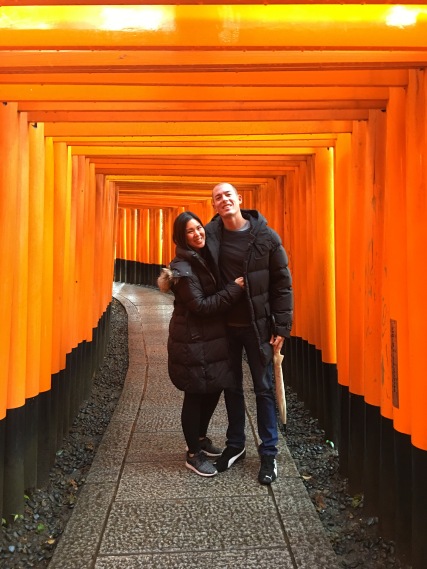




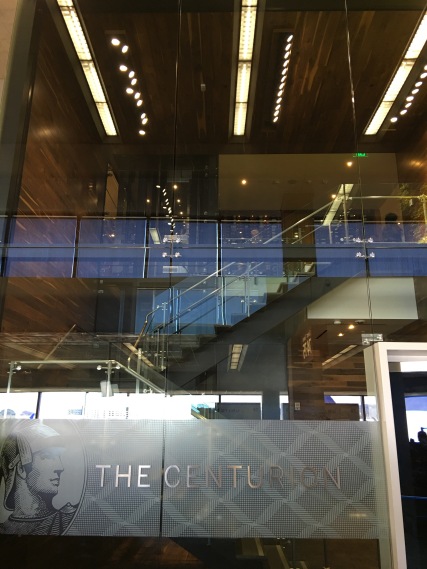





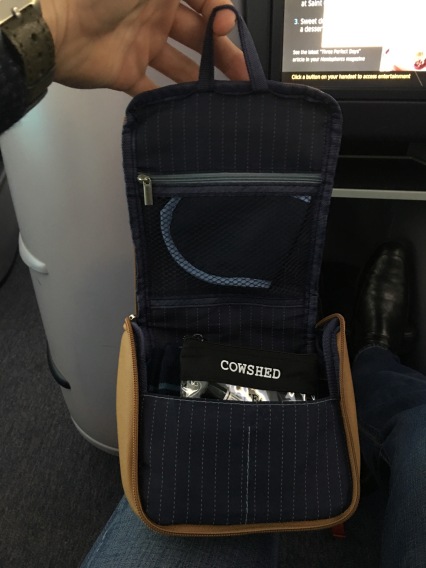















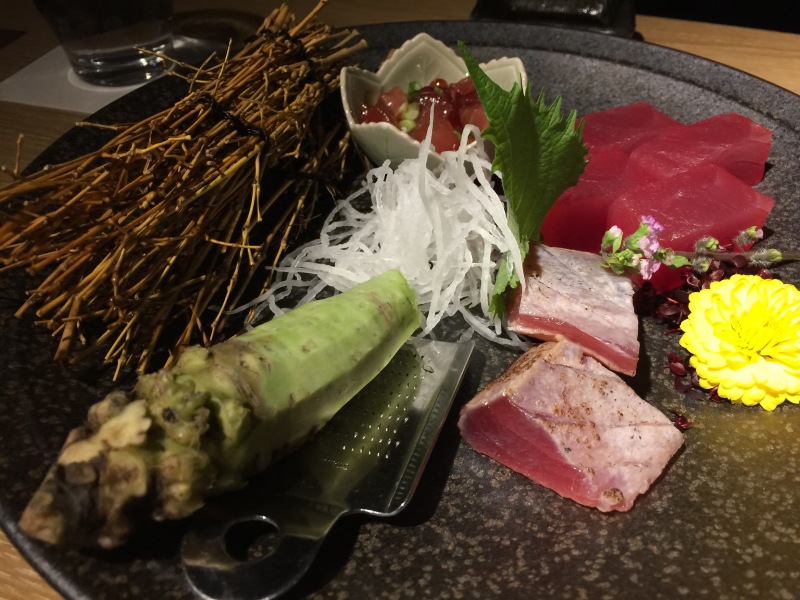



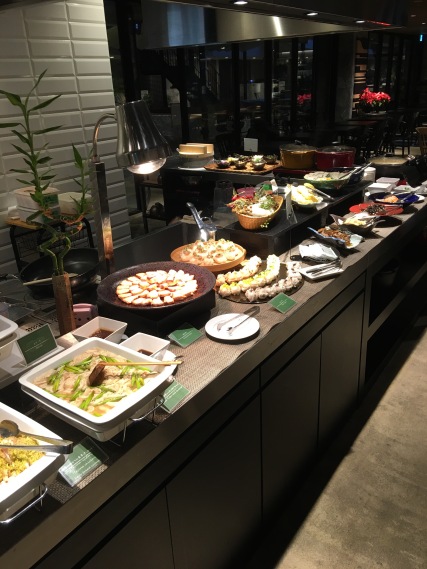















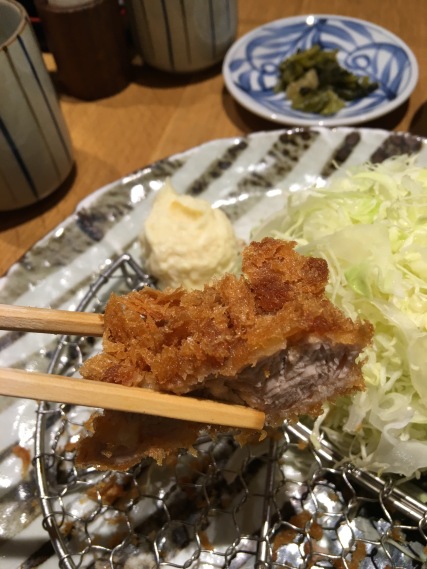













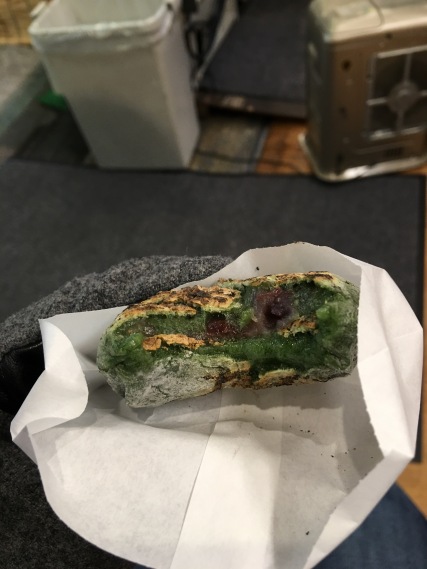
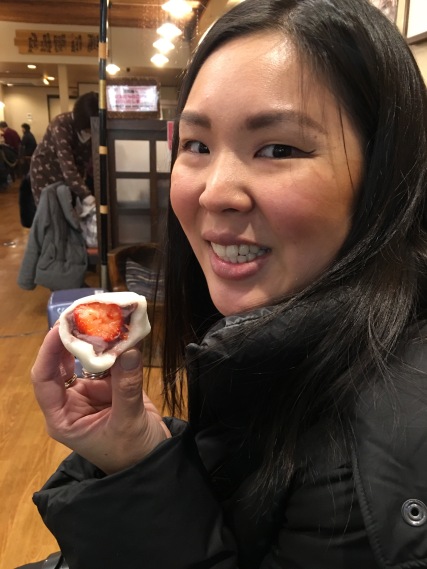



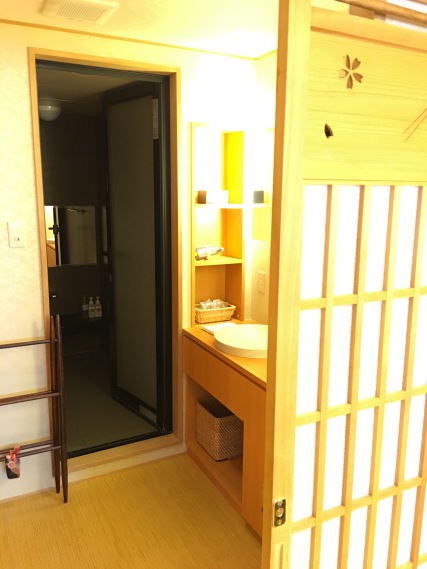
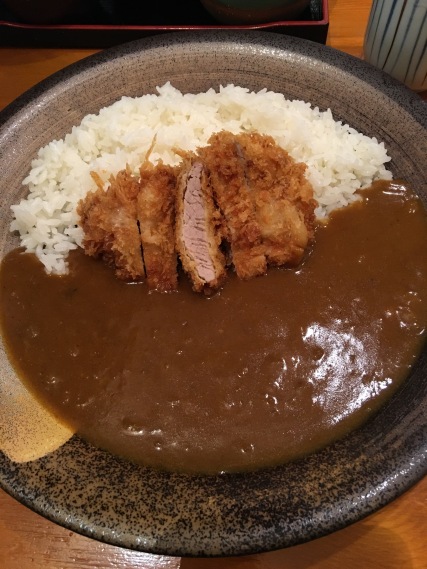











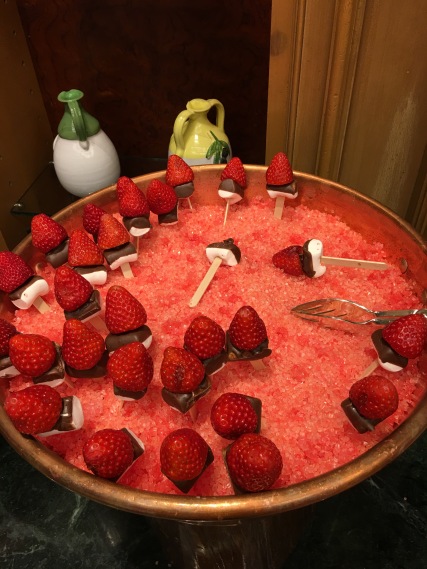











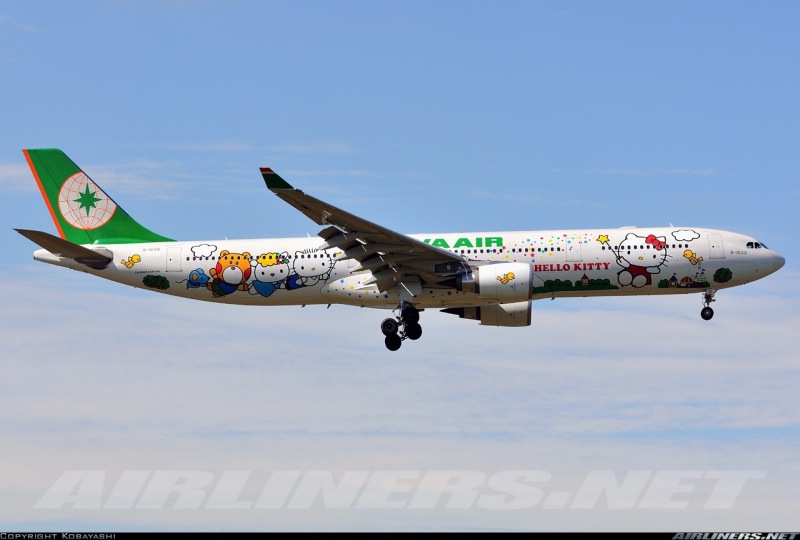








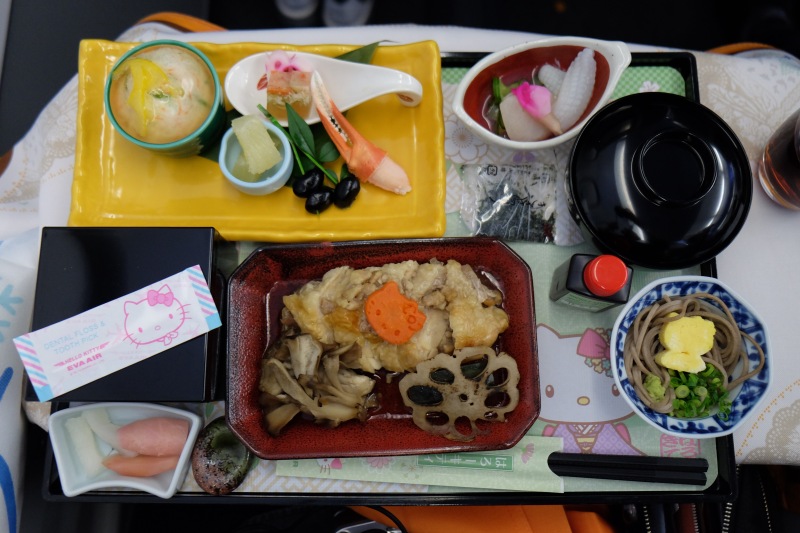








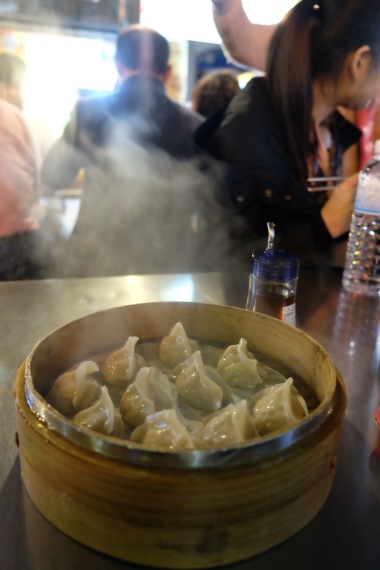
















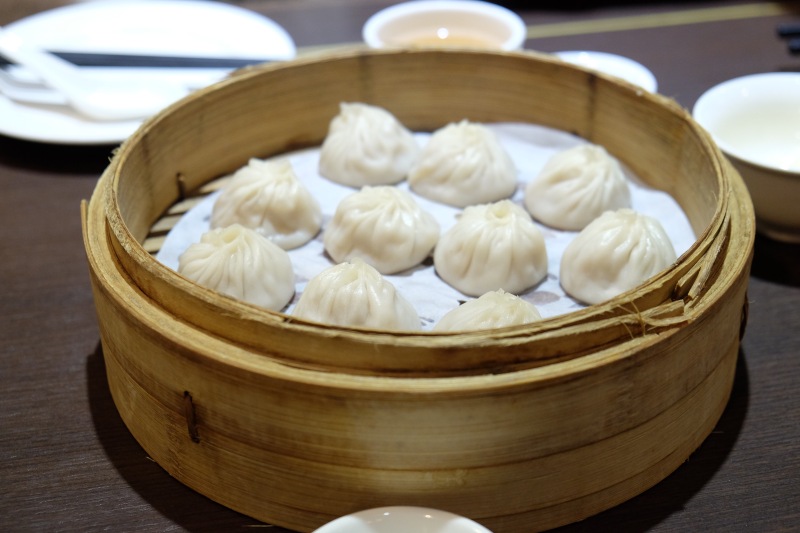



















Love the blog Jason! Good read and great travels for you and Michelle!!
LikeLiked by 1 person
Thanks Sean!!
LikeLike
always love reading your travels. can’t wait to meet you guys in a month!
LikeLike
Right on Kev! Looking forward to it!!
LikeLike
Wow, you guys had a far more accommodation elegant stay than us in Japan.
LikeLiked by 1 person
Thanks Jean! When I travel solo, I lodge humbly. But if I’m with the wife, I make an effort to splurge. 🙂 Where did you stay in Japan?
LikeLiked by 1 person
We stayed at a hotel in business district near Tokyo train station downtown. It was new hotel …I think Mitsui xxxx. I have to look it up. in Kyoto we stayed at an Ana hotel across from the Nijo Castle. Enjoyed it even though slightly expensive for us….at least their free hotel shuttle to train station all hrs. helped us plan trips … 🙂 We went to Nara for 1 day also which I will feature eventually in blog when I get around to it. It was my first trip to Asia. 🙂
LikeLiked by 1 person
Those both sound like nice properties and great locations! Typically I stay at an APA, as I can usually find one in Ginza or Shinjuku for $75/night. They’re small, but clean. I’m eager to read your Nara post—mainly to look at deer photos, which you likely have plenty of! 🙂
LikeLike